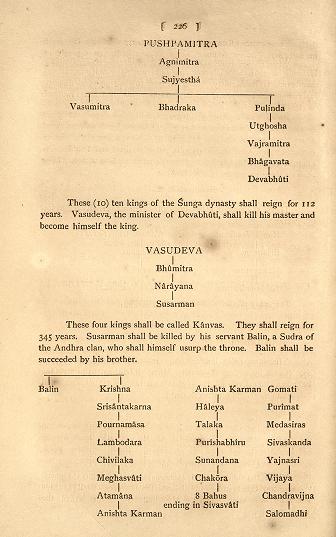Lamboria
Lamboria (लम्बोरिया)[1] Lamboriya (लम्बोरिया)/( लम्बौरिया)[2] Lamoria (लमोरिया) Lamoriya (लमोरिया) Limoria (लिमोरिया)[3] is gotra of Chandravanshi Jats found in Rajasthan.[4]
Origin
This gotra is said to be originated from King Lambodara (लम्बोदर) in the genealogy of Krishna [5] Lambodara (लम्बोदर) was ancient Jat King of Mahabharata period in the genealogy of Krishna in third generation. Lamboria is considered as upper and affluent caste in Jaat community.
Jat Gotras Namesake
- Lamboria (Jat clan) = Lambodara (लम्बोदर). Lambodara is mentioned in verse-1 of Kosgain Stone Inscription (No.I) of Vahara. The record opens with three invocatory verses in honour of Lambodara (Ganesa), Siva and Durgà. It then describes the Moon, the mythical progenitor of the Haihaya (or Kalachuri) family. [6]
History

'A study of the Bhagavata Purana; or, Esoteric Hinduism' by Purnendu Narayana Sinha, pp 226-227 mentions that (10) ten kings of the Sunga dynasty shall reign for 112 years. These are:Pushyamitra → Agnimitra → Sujyestha → (Vasumitra + Bhadraka + Pulinda): Pulinda → Utghosha → Vajramitra → Bhagavata → Devabhuti
Vasudeva, the minister of Devabhuti, shall kill his master and become himself the king.
These four kings shall be called Kanvas. They shall reign for 345 years. Susarman shall be killed by his servant Balin, a King of the Andhra clan, who shall himself usurp the throne. Balin shall be succeeded by his brother Krishna.
- Balin → Krishna
- ↓
- Srisantakarna
- ↓
- Pournamasa
- ↓
- Lambodara
- ↓
- Chivilaka
- ↓
- Meghasvati
- ↓
- Atamana
- ↓
- Anishta Karman
- ↓
- Haleya
- ↓
- Talaka
- ↓
- Purishabhiru
- ↓
- Sunandana
- ↓
- Chakora
- ↓
- 8 Bahus/Bahukas ending in Sivasvati
- ↓
- Gomati
- ↓
- Purimat
- ↓
- Medasiras
- ↓
- Sivaskanda
- ↓
- Yajnasri
- ↓
- Vijaya
- ↓
- Chandravijna
- ↓
- Salomadhi
[ 227 ]
These thirty kings of the Andhra dynasty shall rule the earth for 456 years. Seven Abhiras, kings of Avabhriti, ten Gardabhins (men of Gardabha) and sixteen Kankas shall then be the rulers. They shall be followed by 8 Yavanas, 14 Turushkas and ten Surundas. These 65 kings shall reign for one thousand and ninety nine years. Eleven Moulas shall then be the kings for 300 years.
Bhuta-Nanda, Bangiri, Sisunandi and Yaso-Nandi shall then become kings. Their sons, all known as Bahlikas, shall succeed them. Then Pushpamitra shall be the king, then his son Durmitra. Seven Andhras, seven Kosalas, Vidurapatis and Nishadhas shall then become kings, at one and the same time, over the lands of these names. They shall be the descendants of the Bahlikas.
Visvasphurji, otherwise called Puranjaya, shall be the king of the Magadhas. He shall make havoc of the caste system. His chief town shall be Padmavati (Modern Patna) but his kingdom shall extend from Hardwar to Pryag.
Reference - A study of the Bhagavata Purana; or, Esoteric Hinduism by Purnendu Narayana Sinha, pp 226-227
Distribution in Rajasthan
Villages in Sikar district
Antroli, Harsawa. Katrathal, Malera, Sikar,
Villages in Jhunjhunu district
Brijlalpura, Jodha Ka Bas, Khemu Ki Dhani, Haripura
Villages in Jaipur district
Jaisinghpura Gadoora (2), Maleda, Shahpura,
Villages in Hanumangarh district
Distribution in Haryana
In Bhiwani District
Notable persons
- Ladu Ram Lamboria, from Haripura Jhunjhunu was a social worker and Freedom fighter who took part in Shekhawati farmers movement in Rajasthan
- Prof. Sudhir Kumar - Professor [HAG] at MNIT, Jaipur. Ex-Principal, Govt. Engineering College, Ajmer. Member of several selection committees like UPSC, RPSC, GBU.
- Vikas Kumar Lamboria - (Officer at Reserve Bank of India) From Kharsandi, Nohar, Rajasthan
- Rajpal Lamboria - (Public Relation Officer in Govt. of Rajasthan) from Kharsandi, Nohar, Rajasthan
- Jasmeen Lamboria - (Indian Boxer) Originally from Bhiwani, Haryana
External Links
References
- ↑ O.S.Tugania:Jat Samuday ke Pramukh Adhar Bindu,p.58,s.n. 2194
- ↑ Jat History Dalip Singh Ahlawat/Parishisht-I, s.n. ल-50
- ↑ O.S.Tugania:Jat Samuday ke Pramukh Adhar Bindu,p.58,s.n. 2194
- ↑ Jat History Thakur Deshraj/Chapter IX,p.695
- ↑ Mahendra Singh Arya et al: Adhunik Jat Itihas, p. 279
- ↑ Corpus Inscriptionium Indicarium Vol IV Part 2 Inscriptions of the Kalachuri-Chedi Era, Vasudev Vishnu Mirashi, 1905, p.557-563
Back to Jat Gotras/The Ancient Jats

